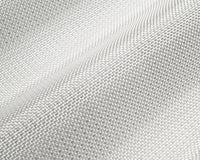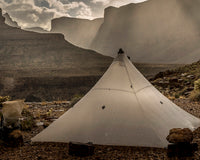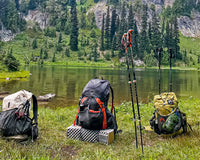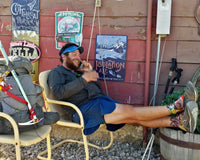
Recently upon my return from a backpacking trip, my bag did not appear in baggage claim, filling me with a feeling of dread. My bag was not delivered to me until the airline’s last possible day before I could file a claim for reimbursement of everything, including my pack. I set about the exercise of gathering receipts and matching it to my gear list. It turns out that this number ever so slightly exceeded the $3,800 reimbursement mandated by federal law.
As I was mentally preparing for the task of replacing a chunk of my gear, I realized that I wouldn’t have to spend anywhere near the original value to find suitable replacements, or even upgrades. There are a few justifications for the reason that my personal kit can reach this stratospheric level of cost: I do a lot of backpacking in varying conditions, I work with gear companies, I write up gear, all of this leading to often having a piece of gear in my kit that might not always be the best value for money. Facing the prospect of a reimbursement from an airline (which did not come to pass) I realized that it could turn into an unexpected windfall of a couple grand. I didn’t wind up walking away with a couple grand due to a lost bag, but I did figure I could pass along the potential savings of my pricing exercise to Garage Grown Gear shoppers.
Ultralight backpacking CAN be an expensive pursuit, and I put the emphasis on “can” because, with some smart gear choices on the more budget friendly side, it’s quite possible to lighten and upgrade your kit with the items featured below. I’ve endeavored to choose pieces that work together in a system.
PACK

Gossamer Gear Kumo 36 Superlight ($170): A time tested and much loved pack in the ultralight community, notable for its flexibility. I can’t count the number of Kumos I’ve seen on trails over the years, a testament to its 36 liters of do-anything comfort at 20oz or less, with a few doodads judiciously trimmed off.
SHELTER

SMD Gatewood Cape ($154.99): This is basically a budget ultralight cheatcode. You could pay four times the cost of the Gatewood Cape for a shelter, and double the cost of it for your raingear… and it’s both. Poncho tarps aren’t for everyone, but there is no denying they won’t add much weight to your pack or take much weight out of your wallet. The SMD Gatewood is the Grandmother of the genre.
Zpacks Sonic Stakes ($18 for 8): Durable with good holding power, light, and reasonably priced. There has been something of a boom in small independent gear makers making incredibly light stakes in the past couple of years, and they are fantastic products, but their bang for the buck for someone building a kit (think ounces saved per dollar spent) are low. Save the truly UL stake madness for when you’re reaching the nadir of your UL journey.
SLEEP SYSTEM

Hammock Gear Burrow Quilt (from $289): Approaching their 15th year keeping Ultralight backpackers warm at night, the Hammock Gear Burrow is a classic and a workhorse with its 20d shell on the outside and 850fp down on the inside.
Six Moon Designs Pack Liner ($19.99) as a pillow : Another opportunity to cut weight and save money by going dual use. As long as you have a little clothing left in the evening to stuff the pack liner with, it makes an excellent pillow! My choice for pillow stuffing on a budget would be the next pick on my list:
Enlightened Equipment Torrid Jacket ($200): Not quite as “budget” as some options, it is the value for money that makes this an excellent choice. For the trade off of a few cubic inches of packability you get a warmth to weight ratio that would cost nearly double if it were a similarly performing and spec’d down jacket. Throw in the weight and cost savings of it being your pillow at night, and it becomes an even better buy. Find women's here and men's sizes here.
BUT WHAT ABOUT A SLEEPING PAD?: I personally believe this is a place to use some of your savings on a market leading option from Thermarest or NEMO, and that in the end they ARE the budget option. The reason is that pads with a higher R value to weight ratio will serve you in a wider variety of circumstances, while a budget pad, which is not appreciably lighter than the Thermarest or Nemo options, will serve in a smaller variety of conditions. Most backpackers wind up purchasing a higher cost / higher R value pad either for shoulder season or alpine conditions regardless.
COOK KIT

BRS-3000T Stove by BRS Outdoor ($19.99): I have gotten a lot of mileage out of the smallest and lightest canister stove on the market for years now… easy to nest in a canister, it requires the user to find a little wind block when it’s breezy (easy enough to improvise), it is utilitarian, tiny, and light.
TOAKS Titanium 550ml Ultralight Pot ($29.95): The smallest size pot capable of nesting a BRS 3000 stove, a canister, and a mini bic, you now have a $50 cook kit that is a competitive weight with any canister stove setup.
Based in Portland, Oregon, Scott Nechemias has hiked over 10,000 miles in the backcountry, often accompanied by his wife Jordan and their fur monsters, Cheese and Utah. He has a particular affinity for off-trail travel, the high desert, and the places in the world less traveled by people. You can find more of his trips on Instagram.















1 comment
Joel
Good stuff, not really sure it should be labeled “budget” gear though.